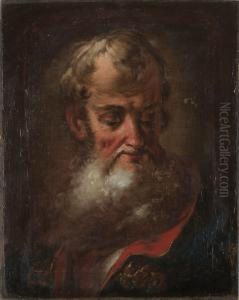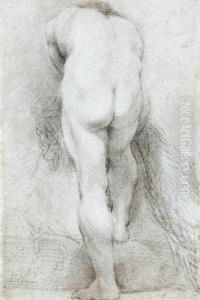Gioavanni Batista Piazetta Paintings
Giovanni Battista Piazzetta, born in 1682 in Venice, Italy, was an Italian Rococo painter, known for his profound influence on the Venetian painting tradition. Unlike the predominant trends of his time that favored bright colors and light, Piazzetta introduced a more intimate, shadowy style that emphasized chiaroscuro and strong emotional content. His work, characterized by a rich palette and deeply felt humanism, bridged the grandeur of the Baroque with the sensuousness of the Rococo. The son of a woodcarver, Piazzetta was initially trained in that craft but quickly turned to painting, studying under Antonio Molinari and perhaps Giuseppe Maria Crespi, who were instrumental in shaping his early style. Piazzetta's oeuvre includes religious commissions, genre scenes, and portraits, showcasing his ability to convey deep spiritual themes and everyday humanity with equal skill. His mastery of light and shadow, particularly in the depiction of fabrics and the human form, brought his figures to life, imbuing them with a sense of dignity and vulnerability. Notable works such as 'The Fortune Teller' and 'The Ecstasy of St. Francis' display his skill in using chiaroscuro to create volume and atmosphere. Piazzetta's influence extended beyond his immediate circle through his role as the head of the Scuola di San Marco, where he trained a generation of Venetian painters, including Giambattista Tiepolo. Despite facing criticism for his perceived idiosyncrasies in technique and composition, Piazzetta's work was highly regarded by his contemporaries and played a significant role in the development of Venetian art. He passed away in 1754, leaving behind a legacy that continues to be celebrated for its emotional depth and technical prowess.

